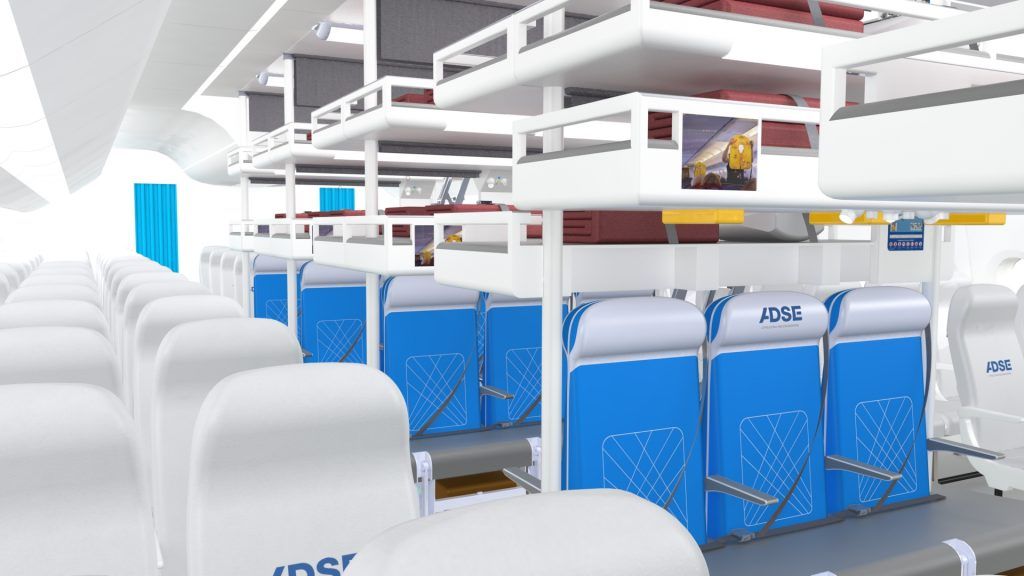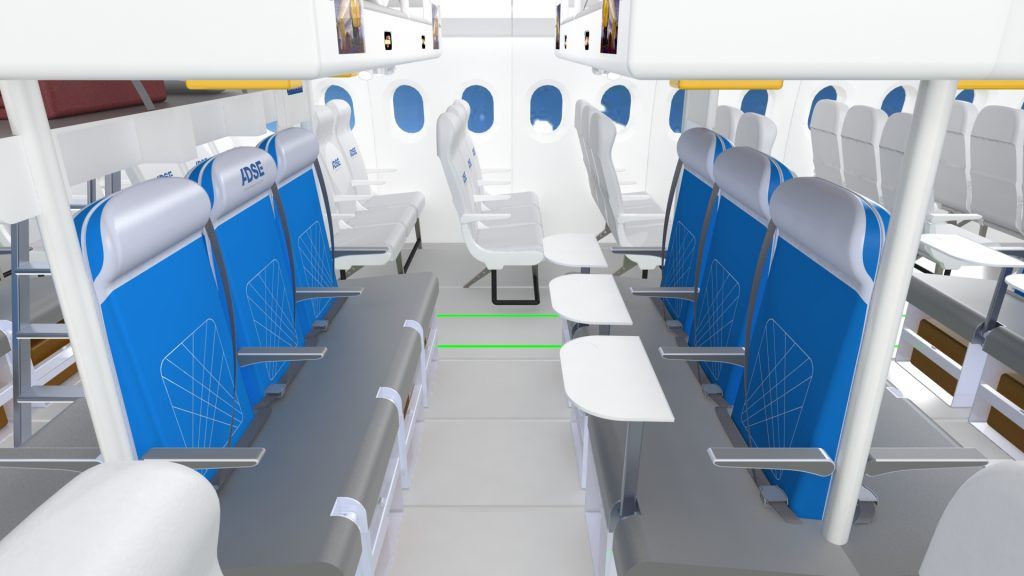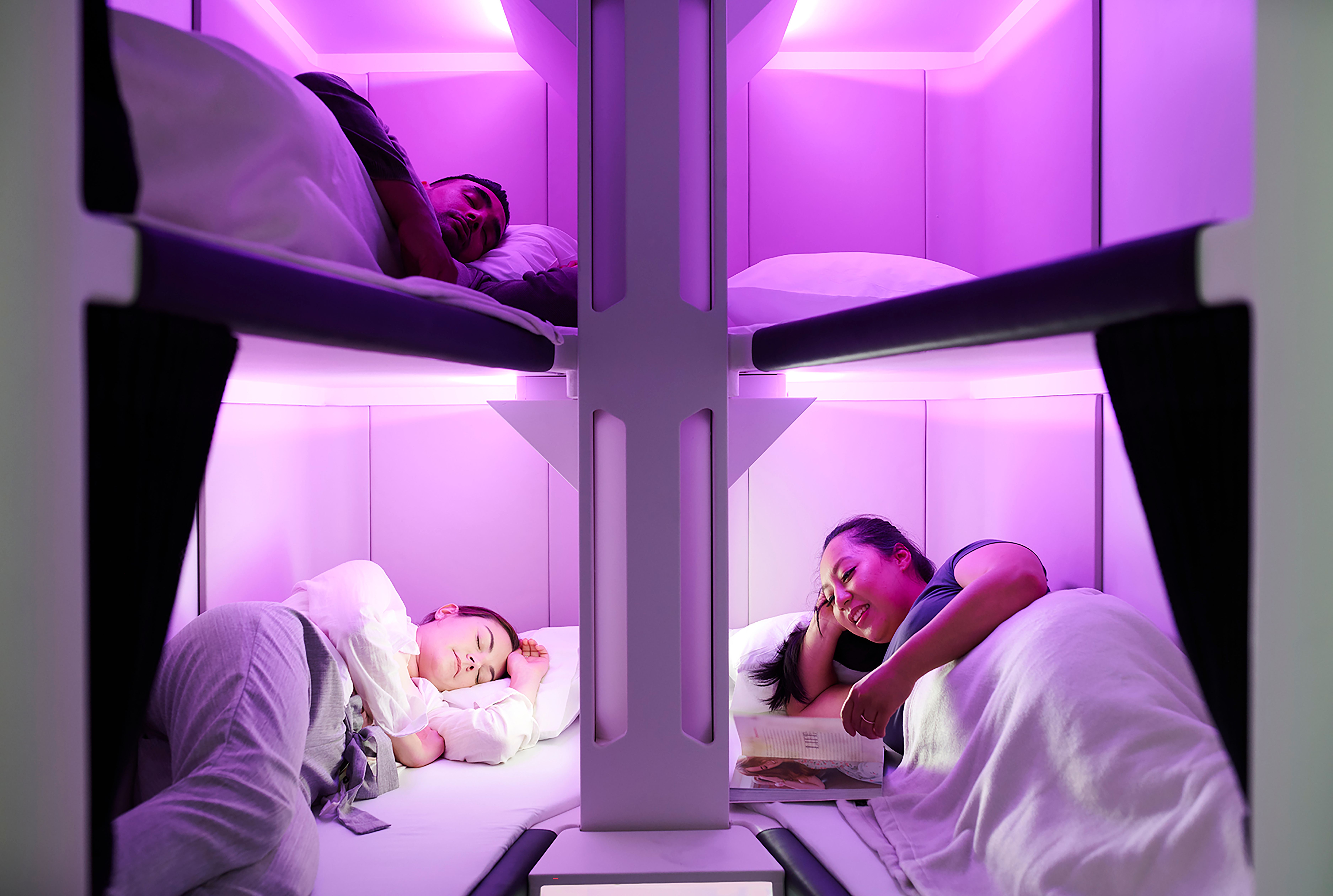During the Crystal Cabin Awards in 2021, an outlandish idea which would definitely improve passenger experience for long-haul travel was picked up as a finalist. We are talking about the Economy Sky-Dream from ADSE Consulting and Engineering, which saw groups of three seats converted into triple bunk beds, letting passengers stretch out and sleep on easier on long-haul flights. Wouldn't it be great if it these seats were actually picked up by an airline? Let's take a new look at this idea, and other innovations that have been introduced ever since.
Crystal clear ideas for sleeping in economy
Floated as a concept a few years ago, the Economy Sky-Dream was nominated as a finalist in the Crystal Cabin Awards 2021. The concept, developed by ADSE Consulting and Engineering, saw the removal of overhead bins in favor of a sleeping area for economy class passengers.
As part of its entry to the Crystal Cabin Awards, ADSE stated that,
“Economy Sky-dream offers a superb economy class sleeping experience for long-haul flights. It is unique in its class as it offers a space-efficient solution that meets applicable certification requirements and creates an additional revenue opportunity for airlines.”
Essentially, the concept sees the storage space above the central row of passengers relocated to make space for bunks. Each group of three seats would have three bunk beds above, the lower of which is raised for taxi, takeoff and landing.
Get the latest aviation news straight to your inbox: Sign up for our newsletters today.
Groups of six passengers are seated facing one another, a small but critical detail in providing the space for this sleeping area. As there is no seatback on which to supply IFE and a tray table, trays are located on fold-up units underneath their armrest.
Safety briefings are transmitted to screens located on the sides of the lower bunk. As this would be a rather inconvenient angle for viewing movies, this would likely be all they were used for. Airlines could opt to place ads on the screens also, but IFE would be more conveniently supplied on a bring-your-own-device basis.
On some widebody aircraft, the Sky-Dream would mean a reduction in passenger density, with three rather than four sitting in the middle section. However, ADSE is confident that this would be adequately offset by the increased revenue possibilities for lie flat comfort, adding another fare tier to economy class seats.
Becoming a bed
Once the aircraft reaches cruise, passengers would have the option to transit into lie flat beds, with one bed for each passenger. The first sleeping platform lowers down towards the seats, giving adequate headroom to both the lower and middle sleeping passengers.
The top and middle bunk are accessed by a fold-down ladder. The third passenger would find space to sleep across the group of three seats, which feature marginally wider cushions and no architecture between the seats for a more comfortable surface.
All three sleeping areas are equipped with passenger service units, which provide ventilation and speakers for cabin announcements. Every passenger has access to a seatbelt, enabling them to remain sleeping in the event of turbulence. Crucially, each passenger service unit also houses the emergency oxygen supply for a depressurization emergency.
Of course, the passengers have now lost a place to store their luggage, as the overhead bins have been removed. However, ADSE suggests that a typical cabin-sized suitcase can be adequately accommodated underneath the seats, with retaining bars to prevent them from sliding out. ADSE says that the solution is easily retrofitted to all modern widebody aircraft, from the 787 to the A350 and 777 lines. The last we heard, the company was yet to receive certification for the product, although it was hopeful that it had ticked all the boxes and that this shouldn’t be an issue. Since then, ADSE has not announced any new development regarding Sky-Dream.
What's new since then?
While there has not been new developments in regard to Adse's revolutionary seat, other companies have introduced similar new ideas. One of which is Air New Zealand, with its Skynest and Skycouch products. Skycouch is a private row of economy seats with footrests that unfold upwards to create flat surfaces for passengers to rest. Skynest, which is set to debut in 2024, is something entirely different. Skynest will feature six pods with fully flat bunks designed to offer the first genuine bed product for the economy cabin.
Passengers will be able to purchase their Skynest experience, although only reserving a four-hour block rather than the whole flight. For travelers flying often with Air New Zealand to far-away destinations such as Houston, this will definitely be a game changer.
What do you think about bunk beds for long-haul economy? Let us know in the comments.



